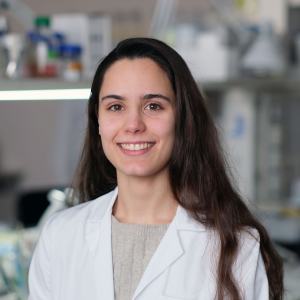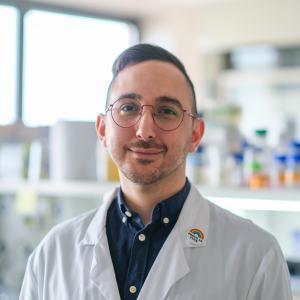Research Group
Micali Group
Microbial Ecology Lab
Our group investigates the emerging self-organizing properties of microbial communities by combining multidisciplinary approaches such as mathematical modeling, stochastic simulations, and microfluidics experiments, with the aim of better understanding bacteria’s role in health and disease.
The challenge
As humans we are not alone: inside our body we host trillions of microbes, our microbiome. The microbiome has a significant impact on human health and disease, as decades of scientific research have already proven. However, we still know very little details about how microbes interact with each other and with our cells, how they self-organize in communities, and what are the emerging properties of these communities – properties that may be fundamental to explain the microbiome’s role in our body.
Main research areas
Linking cell biology and ecology
Bacteria often live within large communities composed of thousands of different cells of either identical or different genotypes. Ecology historically has focused on describing community dynamics, while cell biology has mainly focused on single-cell behavior. We want to know more about whether and how single-cell behavior and cell-cell interactions scale up in shaping community behaviors. We are doing it using a simplified synthetic bacteria consortium that recapitulates entangle growth, high resolution microscopy and microfluidics devices.
Bacterial physiology and cell division control
Bacteria, such as Escherichia coli, follow general scaling laws which link population average growth rate with size and general rules for proteome allocation. The success of these laws increased our understanding of bacterial physiology and allowed us to design better antibiotic treatments. However, the theory and experiments are mainly focusing on steady environmental conditions, neglecting transient dynamics and interactions with other cells. Our lab aims to extend and experimentally validate these laws and the theories for proteome allocation to an ecological context and temporal variable environments.
Interactions across kingdoms
Bacteria not only interact with other bacteria but also with bacteriophages and fungi. Little is known about how these interactions shape the dynamics of a microbial community when it is exposed to antibiotic treatments. Our research aims to build model communities to understand how the interactions across kingdoms may affect antibiotic treatments.
Selected publications
Rare and localized events stabilize microbial community composition and patterns of spatial self-organization in a fluctuating environment.
Two different cell-cycle processes determine the timing of cell division in Escherichia coli.
Microbiota-derived metabolites inhibit Salmonella virulent subpopulation development by acting on single-cell behaviors.
Maximal information transmission is compatible with ultrasensitive biological pathways.
Concurrent processes set E. coli cell division.
Dissecting the Control Mechanisms for DNA Replication and Cell Division in E. coli.
The Empirical Fluctuation Pattern of E. coli Division Control.
Drift and Behavior of E. coli Cells.
Bacterial chemotaxis: information processing, thermodynamics, and behavior.
Accurate encoding and decoding by single cells: amplitude versus frequency modulation.
Group members



